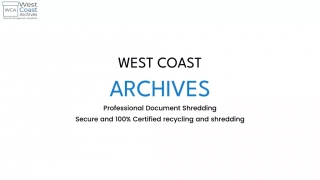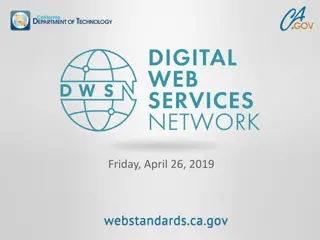
Manufacturing Competitiveness: Global Leadership Insights
Gain valuable insights into manufacturing competitiveness, technology, agility, and personalization from a global leadership perspective. Explore the classification of companies based on shop-floor skills, operational excellence, next-gen education, and management agility. Discover top and bottom companies in various counties, along with key strategies for improving staff morale and recognition in organizations. Uncover essential business success factors such as customer satisfaction, effective communications, employee engagement, productivity, and quality improvement.
Download Presentation

Please find below an Image/Link to download the presentation.
The content on the website is provided AS IS for your information and personal use only. It may not be sold, licensed, or shared on other websites without obtaining consent from the author. If you encounter any issues during the download, it is possible that the publisher has removed the file from their server.
You are allowed to download the files provided on this website for personal or commercial use, subject to the condition that they are used lawfully. All files are the property of their respective owners.
The content on the website is provided AS IS for your information and personal use only. It may not be sold, licensed, or shared on other websites without obtaining consent from the author.
E N D
Presentation Transcript
Manufacturing Competitiveness: Technology, Agility, and Personalization 1 A Global Leadership Perspective Dr. Angus McLeod
Classification of Companies A: Shop-floor skills: Behaviors, skills, training-levels, opportunities to develop further skills & support for career B: Operational Excellence: Systemization on the shop floor C: NextGen: Education and Technology knowledge and application D: Management agility (Leadership): Education, practice, openness to beneficial change across all areas of business.
Top 5 Companies (10 Counties) 30.00 25.00 20.00 D C 15.00 B A 10.00 5.00 0.00 ae005 ae006 ae004 ae036 ae008
Bottom 5 Companies (10 Counties) 14.00 12.00 10.00 D C 8.00 B 6.00 A 4.00 2.00 0.00 ae001 ae024 ae022 ae034 ae002
John Deere Leadership in IoT is key to current JD business strategy Measure staff morale every two weeks Actively seeking to continuously improve morale We need to address your performance issue. Help me to understand why you are feeling the way you are?
Morale & Recognition David Novak, HBR, 2016: 82% of employed Americans do not feel that their supervisors recognize them enough for their contribution .
Business Success Factors 1 HBR Annual Survey (2016; 568 global respondents) Customer Satisfaction Effective Communications High Employee engagement Efficient productivity Continuous Quality improvement 80% 73% 71% 68% 59%
Business Success Factors 2 HBR Annual Survey (2016; 568 global respondents) 94% of companies that prioritize Employee Engagement measured SIGNIFICANT impact on customer satisfaction. (moderate, 17% or considerable , 77%)
Business Success Factors 3 Delivering happiness (for customers and employees) good for our business and shareholders . Alfred Lin (ex-Chairman, Zappos)
Employee Engagement & Morale HBR: Survey of 52 Fortune 1000 companies: 85% of employees experience a sharp decline in morale by 6 months in a job, morale still reduces after that It s maybe not surprising that morale is one of the top three concerns of HR Professionals (Brad Power, 2016., HBR). The other concerns are customer satisfaction and profits.
Key Factors for Happy staff AND Business Success #1 Equal treatment for all Respect Fairness Support (during difficulties) Achievement Cameraderie Purpose: reasons to work with the local team Share information as a principle, not need to know
Key Factors for Happy staff AND Business Success #2 Recognition: do it often and make it personal Meaning: Explain what the benefits are, including for them Conversation, not commands Ask questions, listen, make change & tell them what you did and why Servant-Leadership at all levels of management (coaching skills) Provide active feedback on good- and below-performance Self-managing teams: QC, scheduling, methods Autonomy
Autonomy: TWENTY year study Autonomy: Self-direction with the right level of stress, makes workers more productive & they experience more wellbeing (happiness) at work Autonomy: Creates positive independent actions Autonomy: Staff turn-over is reduced. https://angusmcleod.com/portfolio-items/go-autonomy/
Ten Counties Every company surveyed expressed hiring people as a problem In many companies, staff turnover is > 40% pa If managers & supervisors were better at employee engagement, morale-building & increasing autonomy, would there still be a significant hiring problem? And What level of business success, including implementation of new-technology/IoT etc would these improvements make?
Manufacturing Competitiveness: Technology, Agility, and Personalization 2 A Global Leadership Perspective Dr. Angus McLeod
Three Tips 1. Where we put our focus is where we get results manage the change 2. Take your self to work each day humanity pays dividends 3. Ask questions; do less telling!






















